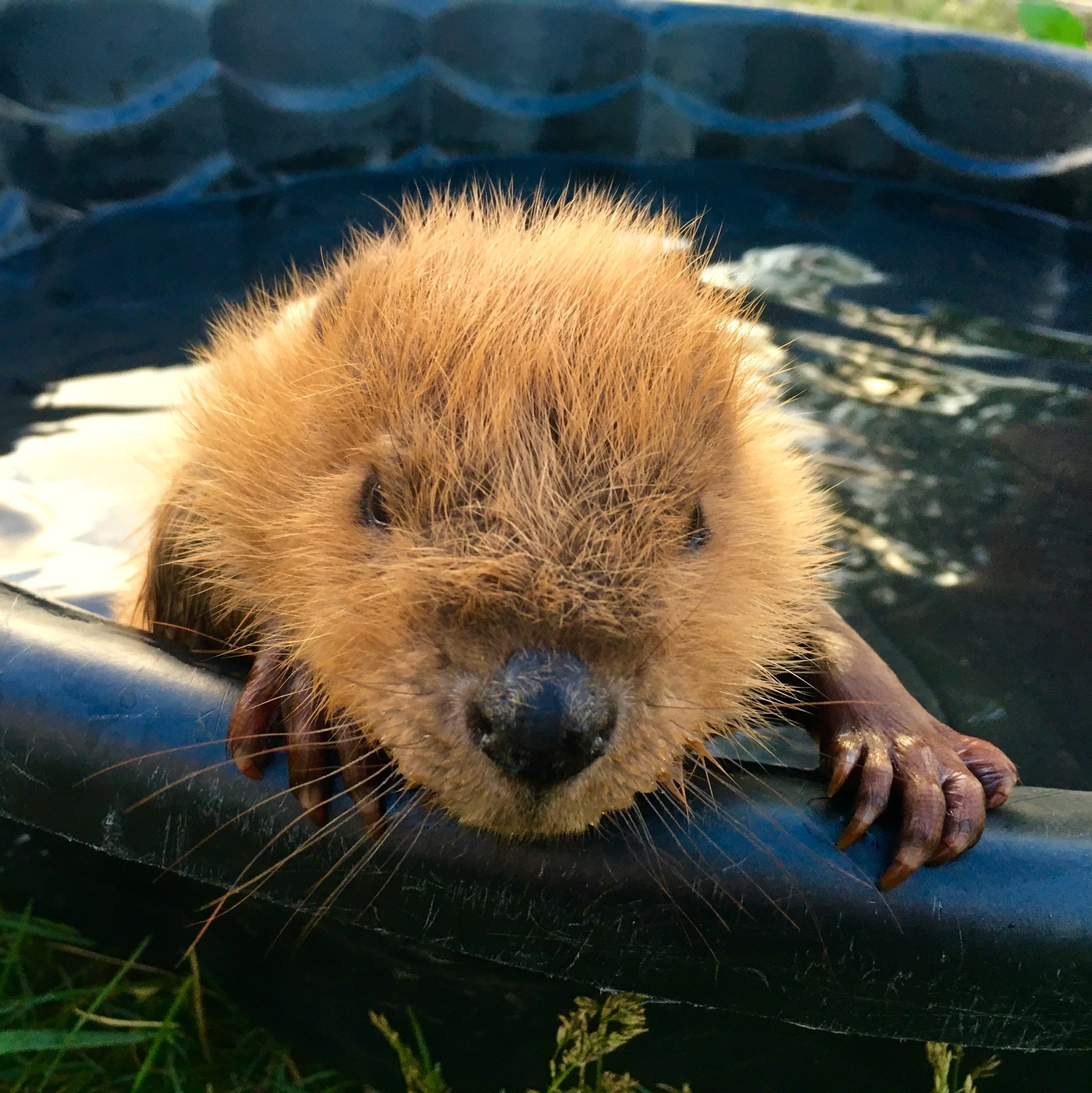Last week the baby (kit) North American beaver we have in our care made news across the globe as the video of him enjoying “pool time” went viral. If you haven’t seen the video yet, you can head over to our Facebook page to watch: https://www.facebook.com/albertainstituteforwildlifeconservation/
Currently, we do not know the sex of the kit we have in care. The only guaranteed way of doing this is by doing x-rays, but it is not essential to the kit’s care currently so we will wait until he/she is a little older.
We are so appreciative of all of the support that has been offered to our organization and wanted to provide everyone with an update on the beaver kit.
First and foremost, the kit continues to do well in care and is putting weight on daily. Our organization is a wildlife rehabilitation centre with the aim to rehabilitate and release animals back to the wild. As he/she is a wild animal and not a pet, we are taking steps to ensure he/she is not habituated to humans. We have no intention of keeping the beaver kit in captivity for the entirety of his/her life and are planning on his/her eventual release back to the wild.
Based on our past experiences, and with consultation with rehabilitators that specialize in raising beavers in the USA and Canada, we will most likely have the kit in our care for 2-3 years. 2-3 years is the normal age beavers leave their parents, but the timing depends on several factors such as the sex of the kit, beaver density in the area etc.
What do the next 2-3 years look like for this little kit? The first year of a beaver kit’s life is spent sleeping, eating and playing. It is in years 2 and 3 that the kits start to learn how to be “engineers” and work on building lodges and dams.
The beaver kit is only one of nearly 200 important patients in care. If you would like to donate to the care of any of the patients in care, please see how you can support us.







1 thought on “Update on beaver kit”
I saw him from a distance while I volunteered today. Could he/she be reintroduced with another family? Would they accepted/adopt him/her? Please advise of the cost to keep him/her for the time he/she might need to spend at the Centre.